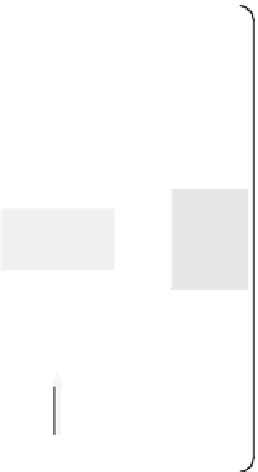Environmental Engineering Reference
In-Depth Information
When resources have a very high cost, a failure during an action can threaten
the whole mission. For planning in this type of domain, the costs and recov-
ery strategies must be carefully chosen before action is taken and resources
committed.
Having reviewed planner technology and a number of design choices facing
a planner, we now will describe several common planner technologies.
5.1.2 Symbolic Planners
Symbolic planners are systems that represent their goals and plans as a series
of symbolic assertions, instead of numbers, fuzzy quantities, or probabilities.
Symbolic planners have been used in many domains.
Figure
5.3
depicts a symbolic planner. The plans of a symbolic planner
are stored in a centralized database. Each plan has a set of preconditions and
a list of operations to perform. The planner uses the preconditions to deter-
mine when it can use a plan. These preconditions can specify environmental
constraints, the availability of resources, and potentially whether other plans
have been executed before this plan. The list of operations in the plan may be
primitive operations to perform, or they can be additional plan components.
These plan components become additional subgoals that need to be examined
by the planner. Often a plan instantiated during the planning cycle is called
a
task
.
Creat
e
Initial
Task List
Goals
Ta
s
ks
Execute
Plan
And
Return
Results
Iteratively
Create Plan
Plans
Database
W
or
ld
Model
Up
da
te
Model
Fig. 5.3.
Symbolic planner







































































